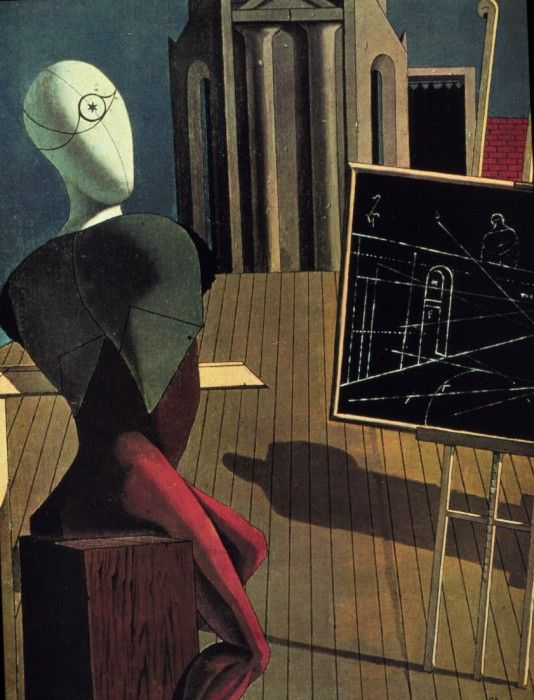The main artist in the overture to Louis A. Sass’s magnum opus, Madness and Modernism, is Giorgio de Chirico. His painting ‘The Seer’ is prominently displayed on the cover of Sass’s book. The first chapter begins with a long quotation from de Chirico’s diary, and Sass quickly picks up the word Stimmung, which de Chirico borrowed from Friedrich Nietzsche. In his book, Sass will continue to use this word for referring to a special state of mind that plays a major role in people he calls ‘schizophrenic’.

Giorgio de Chirico, The Seer
The most prominent artist in my own book The Crossing is Vincent van Gogh. This website includes two paintings by Van Gogh that can be reached via QR codes in my book. They are intended as pictures to illustrate certain passages in the text. The paintings in question are Shoes and Wheatfield with Partridge. For the feeling of an incipient psychosis I use the word Lichtung, which I borrow from Martin Heidegger. The most literal translation of Lichtung is ‘clearing’, which is an open space in the forest where light miraculously shines through. Pictures of such-like clearings are present on the cover of my book and on this website, functioning as an overarching image. Heidegger uses the word Lichtung at many places, and so he does in his evocation of ‘peasant shoes’ in his ‘Der Ursprung des Kunstwerkes‘, which is based on the painting by Van Gogh mentioned above.
De Chirico and Van Gogh are both influential artists, and both struggled with mental disorders. Yet they created two very different oeuvres – just as Nietzsche’s Stimmung and Heidegger’s Lichtung suggest two very different worlds of experience.
While reading Iain McGilchrist’s The Master and the Emissary: The Divided Brain and the Making of the Western World, which links the neurophysiology of the cerebral hemispheres to Western cultural history, I fathomed that Van Gogh’s world might be closer to right-hemisphere disinhibitions, whereas De Chirico’s paintings are related to – as McGilchrist writes – a ‘freewheeling left hemisphere’.
At my presentation at the Too Mad To Be True conference in Ghent in October 2024, I will report on my further explorations of this idea.
Both McGilchrist and Sass keep focus on what they call ‘schizophrenia’, while keeping other mental adventures in which psychoses do occur outside of their field of thought. Although McGilchrist does connect the right hemisphere with sacred awe and the numinous, he says nothing further about the relationship between religion and madness. In any case, he does not write about the psychopathologies of the right hemisphere, as if psychopathology is a left hemisphere thing.
In my search for information about right hemisphere disinhibitions, I came across the remarkable story of Jill Bolte-Taylor, a brain scientist who suffered herself from a left hemisphere stroke, accompanied by strong right hemisphere disinhibitions. Her story is called My Stroke of Insight and was the first TED talk to go viral.
